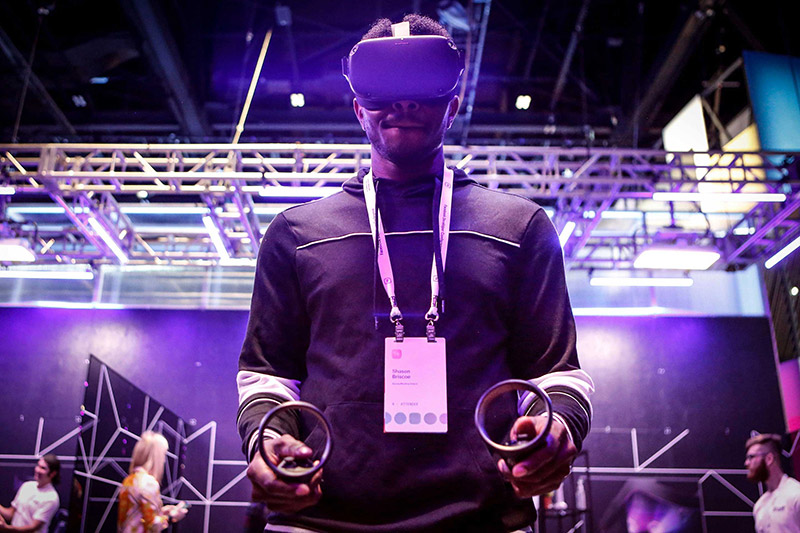科技公司崛起靠燒錢,?大錯特錯,!

|
今年5月底,,網(wǎng)約車巨頭Uber提交了上市以后的首份財報,披露了亮眼的財務數(shù)據(jù),,季度營收達30億美元,。但麻煩在于,營收數(shù)據(jù)背后的成本達40多億美元,。 Uber的競爭對手Lyft也在今年上市,,5月早些時候,Lyft上市后的首份財報中披露的虧損數(shù)字更大?——凈虧損達11億美元,,營收為7.76億美元,,凈虧損數(shù)字幾乎達到2018年同期2.34億美元凈虧損的5倍。(也算是一種進展,。)特斯拉情況差不多,,2006年以來累計虧損66億美元,然而在投資者推動下,,公司市值現(xiàn)已達到400億美元,。 企業(yè)想在新經濟時代中成功就要大手筆花錢,幾乎已經變成公理,;新興市場正在迅速演變?yōu)橼A家?guī)缀跬ǔ缘木置?,初?chuàng)企業(yè)別無選擇,只能盡快搶占市場份額,,擠垮競爭對手,。企業(yè)還得在技術、營銷和頂尖人才方面三管齊下,因為畢竟蘋果,、亞馬遜和谷歌等行業(yè)大佬都是這么做的,。 然而事實并非如此。 這就是《財富》雜志的肖恩·塔利回顧蘋果,、亞馬遜,、谷歌(如今叫Alphabet)和Facebook歷年財報之后的發(fā)現(xiàn)?!笆聦嵶C明,,成功的科技公司早年需要大量燒錢的假設不僅是錯誤的,而且是錯得離譜,?!?他寫道。 肖恩計算了各巨頭的凈現(xiàn)金流(運營活動產生的現(xiàn)金減去資本支出),,發(fā)現(xiàn)谷歌顯然從未有過負現(xiàn)金流,,令人震驚。與此同時,,蘋果和Facebook也只是短期曾經出現(xiàn)過入不敷出,。就連最常被稱為“靠花錢賺錢”之典范的亞馬遜,也遠比今天的準“獨角獸”們節(jié)儉得多,。即使凈現(xiàn)金流為負時,,亞馬遜的燒錢率與總銷售額相比也不算大。 正如肖恩的出色分析提供的證明,,商業(yè)領域中數(shù)學最能打破傳統(tǒng)智慧,。另一個例證便是《財富》雜志7月刊的封面故事,由阿里克·詹金斯撰寫有關虛擬現(xiàn)實沉浮及能否再次興起的精彩故事,。五年前,,F(xiàn)acebook斥資30億美元收購虛擬現(xiàn)實頭盔生產商Oculus時,許多技術專家似乎都認為,,虛擬現(xiàn)實將是全球娛樂的下一步發(fā)展方向,。當時,風險資本家爭相為虛擬現(xiàn)實初創(chuàng)企業(yè)提供融資,,僅2016年便投資逾8.5億美元,,結果卻是市場因為消費者興趣寥寥而萎靡不振。 該例子同樣可以用數(shù)學分析:根據(jù)一位行業(yè)觀察人士的說法,,去年Oculus旗艦版頭盔的出貨量僅為35.4萬副,,僅為同期索尼PlayStation 4游戲機1700萬臺出貨量的2%。 為什么會失敗呢,?阿里克解釋道,,部分原因是設備笨重又價格高昂,。但真正的限制因素是,缺乏充分理由吸引人們花高價購買然后戴上笨重的頭盔:應用不夠好玩,,很少有玩家高頻使用,。 然而,情況或許終將改變,。根據(jù)阿里克的報道,,虛擬現(xiàn)實已經實現(xiàn)升級換代,不少開發(fā)人員也為該技術找到了一些企業(yè)層面頗具吸引力的用途,。 畢竟,,虛擬現(xiàn)實領域確有可能存在大機會。但建議先讀一讀阿里克的專題報道,,再決定要不要投身其中,。(財富中文網(wǎng)) 本文另一版本登載于《財富》雜志2019年7月刊,標題為《跟著金錢走》,。 譯者:馮豐 審校:夏林 |
At the end of May, when Uber filed its first earnings report as a public company, the ride-hailing titan revealed it had an impressive $3 billion in revenue for the quarter. Trouble is, it had spent just over $4 billion to produce it. Earlier in that month, Uber’s road rival Lyft, which also went public this year, revealed an even bigger splotch of red ink—$1.1 billion worth, on $776 million in revenue—in its debut quarterly report. That net loss, as it happens, was nearly five times the size of the $234 million hole it had dug in the same period of 2018. (Progress.) And then there’s Tesla, which has lost a cumulative $6.6 billion since 2006. Investors, for their part, are currently rewarding it with a $40 billion market cap. It has become all but axiomatic that to succeed in the new economy, companies have to spend with abandon; in burgeoning marketplaces that quickly morph into winner-take-most, startups have no choice but to grab whatever share they can, as fast as they can, and box out the competition. They have to triple down on technology, on marketing, on top-tier talent because, after all, that’s what Apple did. And Amazon. And Google. Except, dear readers, it wasn’t. That’s what Fortune’s Shawn Tully discovered when he went back through years of financial statements for Apple, Amazon, Google (now Alphabet), and Facebook. “It turns out the assumption that successful tech companies burned lots of cash in their youth isn’t merely wrong—it’s staggeringly wrong,” he writes. Shawn calculated the free cash flow (cash generated from operating activities minus capital expenditures) of these giants back to their pre-behemoth days and found that Google—quite strikingly—had apparently never been cash-flow negative. Apple and Facebook, meanwhile, had just fleeting periods when they lived beyond their means. And Amazon, which is most-often cited as the exemplar of “spend money to make money,” was also far more frugal than today’s unicorn-chasers realize. Even in the periods when its free cash flow was negative, the burn rate was modest compared with total sales. In business, as Shawn’s terrific analysis proves out, nothing bursts the conventional wisdom quite like math does. And Exhibit B in this maxim is this issue’s cover story—Aric Jenkins’s wonderful tale of the rise and fall and?…?could it be??…?rise anew of virtual reality. Five years ago, when Facebook shoveled out $3 billion to buy VR headset maker Oculus, it seemed to many of the technoscenti that virtual reality would be the next dimension for global recreation. Venture capitalists rushed to finance VR startups—investing more than $850 million in 2016—only to see the market fizzle for lack of consumer interest. Again, here’s some math: Last year, Oculus shipped just 354,000 units of its flagship headset, according to one industry watcher—which is equivalent to about 2% of the 17 million or so PlayStation 4 consoles Sony sold during the same period. Why the fizzle? The clunky gear and the lofty price points played a part, Aric explains. But the real limiting factor was the lack of a good reason to wear that clunky gear and pay those prices: The applications just weren’t engaging enough to absorb players day in and day out. That may at last be changing, however. As Aric reports, VR has upped its game—and a number of developers have found some compelling enterprise-related uses for the tech, too. It just may be that virtual reality is the real thing, after all. But I’d suggest you read Aric’s feature before you take that first plunge. A version of this article appears in the July 2019 issue of Fortune with the headline “Follow the Money.” |











